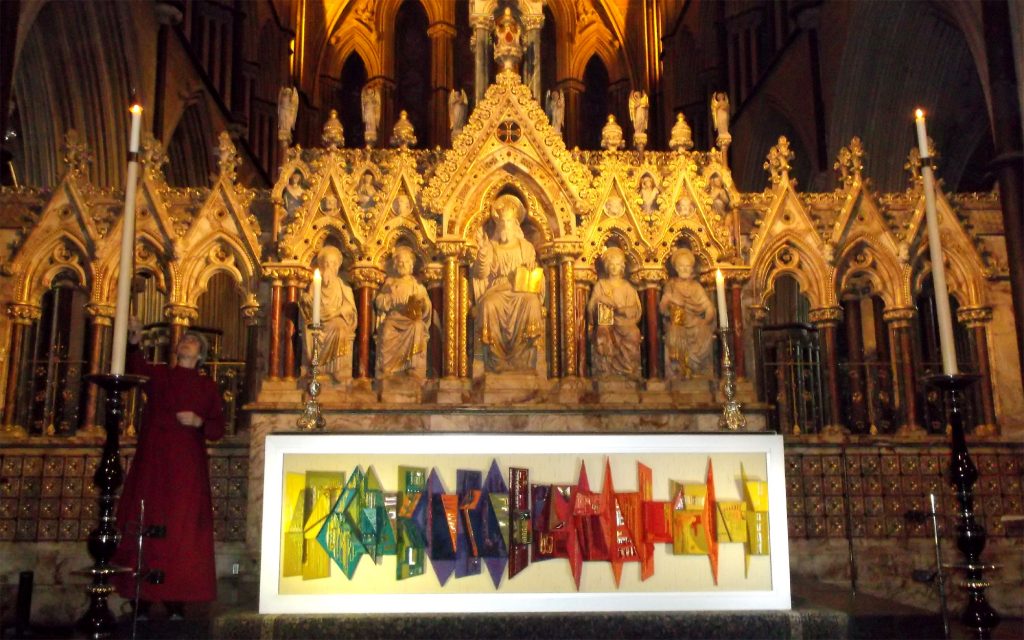Mystery Worshipper: Urganda
Church:
Worcester Cathedral
Location: England
Date of visit: Sunday, 19 January 2020, 4:00pm
The building
The Cathedral Church of Christ and the Blessed Virgin Mary was founded in 680, but the present building dates from 1084 and is largely the work of St Wulstan, the last Anglo-Saxon bishop to retain his seat after the Norman Conquest. It was subsequently rebuilt many times. The Saxon crypt remains, along with some medieval carving and tombs, but the overall impression is Victorian. King John is buried in the chancel, near the chantry chapel of Henry VIII's son Arthur. Bishop Hurd's tomb is always engulfed in cleaning materials. In the late 18th century, he built the Hurd library and was known as The Beauty of Holiness.
The church
They sponsor a variety of lectures, workshops and prayer groups throughout the year, as well as musical and theatrical events. Their website gives full details. According to their website, ‘The 1662 Book of Common Prayer and Common Worship of the Church of England are used daily.’ Morning prayer, holy communion, and either evening prayer or evensong take place on weekdays; with morning prayer, holy communion, cathedral eucharist and evensong on Sundays.
The neighborhood
Worcester is a town that has seen better days. Until recently it was known for the china factory, which was right in the middle of town, but it is now being colonised by developers. It was a royalist stronghold in the Civil War, so when Charles II returned, there was a lot of triumphalist building. Some still survives, including the Town Hall, with the head of Cromwell pinned by the ears over the entrance. Worcester now is looking for a new identity. The cathedral precinct was brutally carved up by planners in the 20th century, so as well as the usual problems of unemployment and homelessness, Worcester has a major traffic problem. It copes nobly with what is left.
The cast
Clergy took a back seat. The choir were centre stage.
What was the name of the service?
Evensong.How full was the building?
The service was held in the quire, which could hold about sixty. It was pretty full. The choir of twenty were joined by three priests and a verger.
Did anyone welcome you personally?
Handed a service sheet.
Was your pew comfortable?
Very.
How would you describe the pre-service atmosphere?
Quiet.
What were the exact opening words of the service?
‘A warm welcome to evensong on this feast of St Wulstan.’
What books did the congregation use during the service?
Book of Common Prayer, New English Hymnal.
What musical instruments were played?
Organ. The quire organ is an opus of Kenneth Tickell and Company Ltd dating from 2008.
Did anything distract you?
The unobtrusiveness of the clergy. They occupied their back seats very well.
Was the worship stiff-upper-lip, happy clappy, or what?
Completely traditional. The music sounded all late 19th to early 20 century. No procession. No lectern. Only the blessing at the end was from the high altar.
Exactly how long was the sermon?
No sermon.
Which part of the service was like being in heaven?
The spoken bits (as well as the singing) were beautifully done.
And which part was like being in... er... the other place?
The altar cloth. Most of the chancel is Victorian and comes under the heading 'of boring stuff that doesn't touch us'. So the altar cloth is deliberately shocking. Unfortunately I also find it hideous.
What happened when you hung around after the service looking lost?
We all sat and listened to the organ.
How would you describe the after-service coffee?
None.
How would you feel about making another visit (where 10 = ecstatic, 0 = terminal)?
7 — Especially if it was in the Saxon crypt.
Did the service make you feel glad to be a Christian?
I understood why people find services like this boring.
What one thing will you remember about all this in seven days' time ?
The priest did his part beautifully, but in an understated way. He could always get a job as a voice artist.
